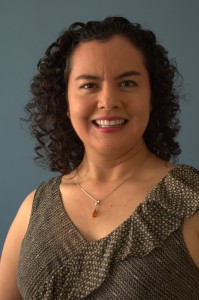
The first accountability mechanisms were created more than twenty years ago to allow people and communities negatively affected by projects funded by development finance institutions (DFIs) to seek recourse for harms related to those projects. While low-risk development projects such as education, health, and law reform can improve lives, international development financing for high-risk projects, such as large-scale infrastructure, can do just the opposite.
In 1993, the World Bank Inspection Panel became the first independent accountability mechanism, marking the first time communities could seek recourse from the World Bank for harms resulting from its investments. It was a revolutionary idea born in conversations between CIEL Attorneys David Hunter and Dana Clark, and in the twenty years since its creation, more than 23 other IAMs have been created at other DFIs.
Glass Half Full? The State of Accountability in Development Finance, a new report from eleven international organizations, including the Center for International Environmental Law; the Centre for Research on Multinational Corporations (SOMO); Accountability Counsel; Both ENDS; CEE Bankwatch Network; Center for Human Rights and Global Justice, New York University School of Law; Counter Balance; Foundation for the Development of Sustainable Policies (FUNDEPS); Inclusive Development International (IDI); Natural Justice and the Program on International & Comparative Environmental Law, American University Washington College of Law, analyzes how independent accountability mechanisms (IAMs) at eleven of these development banks have worked (or not) for communities seeking redress and justice. Based on this analysis, the report offers recommendations for improving and strengthening IAMs so that they can serve as a meaningful avenue of remedy for affected communities.
The title of the report derives from the central principle that the glass of accountability is half full or half empty, depending on your perspective. While complainants are better off than they would be in the absence of any complaint procedure, the outcome rarely provides adequate remedy for the harm that people and communities affected by development projects have experienced. Their concerns may be validated, their issues may receive attention at the international level, and sometimes, though not often enough, their lives may be changed for the better as a result of their complaints.
Based on the analysis of a staggering 758 complaints submitted to the 11 IAMs that Glass Half Full examines over 21 years, there is a systemic problem in the way that development finance institutions are planning and executing projects. In the majority of the cases, the banks do not follow the recommendations of the IAMs or provide due compensation to the affected groups. And for those cases in which the banks do follow the recommendation of the IAM, the compensation offered cannot make up for the dispossession of land, loss of resources, diminished livelihoods, and environmental degradation caused by the projects. In the seven case studies included in the report, there was a pattern of bad investment decisions based on flawed social and environmental assessments.
IAMs do not shift accountability away from the banks or dismiss harms; instead, they should be integrated as part of the feedback loop into better policy and decision-making going forward. Cases brought to independent accountability mechanisms should inform development finance institutions on how to avoid harms in the future, how to ensure that proper environmental and social safeguards are in place to protect human rights.
Glass Half Full also finds that when complaints are brought to IAMs, banks [tend to] spend resources to deny that any harm was done rather than using the complaints as a means to better their policies and system. Accountability mechanisms have little purpose if banks do not use them to learn from their mistakes and do better in applying a human rights-based approach to project design, selection and implementation.
Whether the glass of accountability is half full or half empty, Glass Half Full offers two levels of recommendations to strengthen and improve independent accountability mechanisms so that they can serve as a meaningful avenue of remedy for threatened or affected communities. At one level, it makes a series of recommendations for the adoption of best practices at the mechanisms as well as the development finance institutions at which they are based. However, simply adopting best practice will not be enough to ensure that complainants receive remedy for the harms that have occurred given that over 20 years, the DFIs have demonstrated that they are either unwilling or unable to fulfill their responsibilities in the accountability structure.
At the second level of recommendations is the urgent need for a new accountability system that empowers IAMS to make binding decisions on both the banks and its borrowers. It is a system that also strips DFIs of their claim to immunity in national courts. DFIs will only respect human rights and the environment when they are truly held accountable for the harms they cause around the world by the activities they finance.
